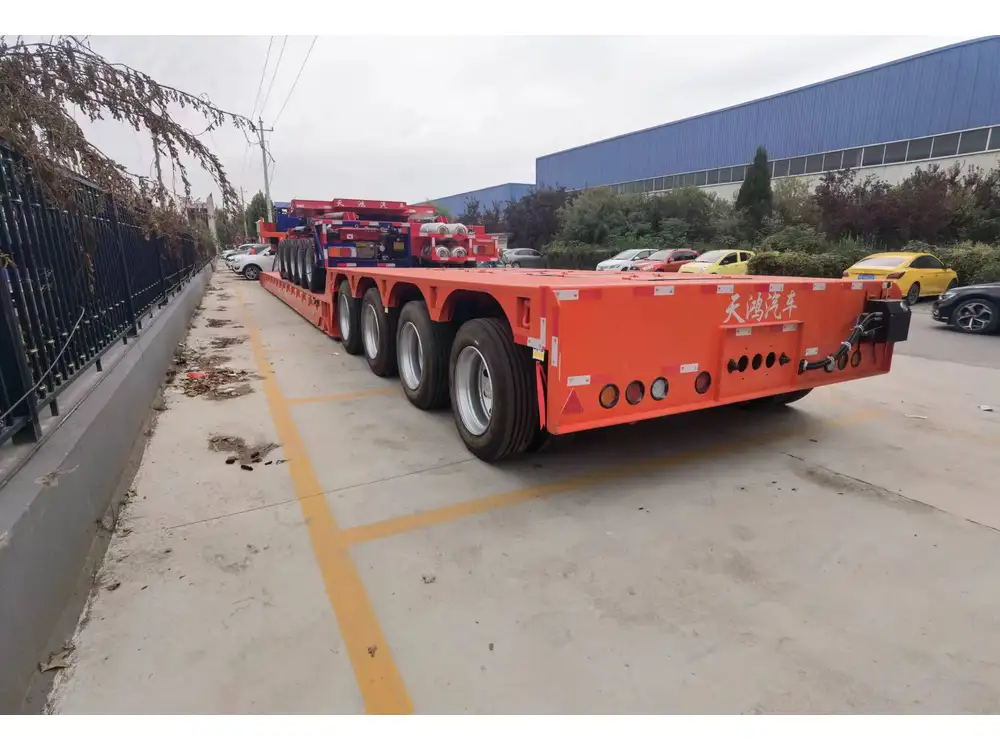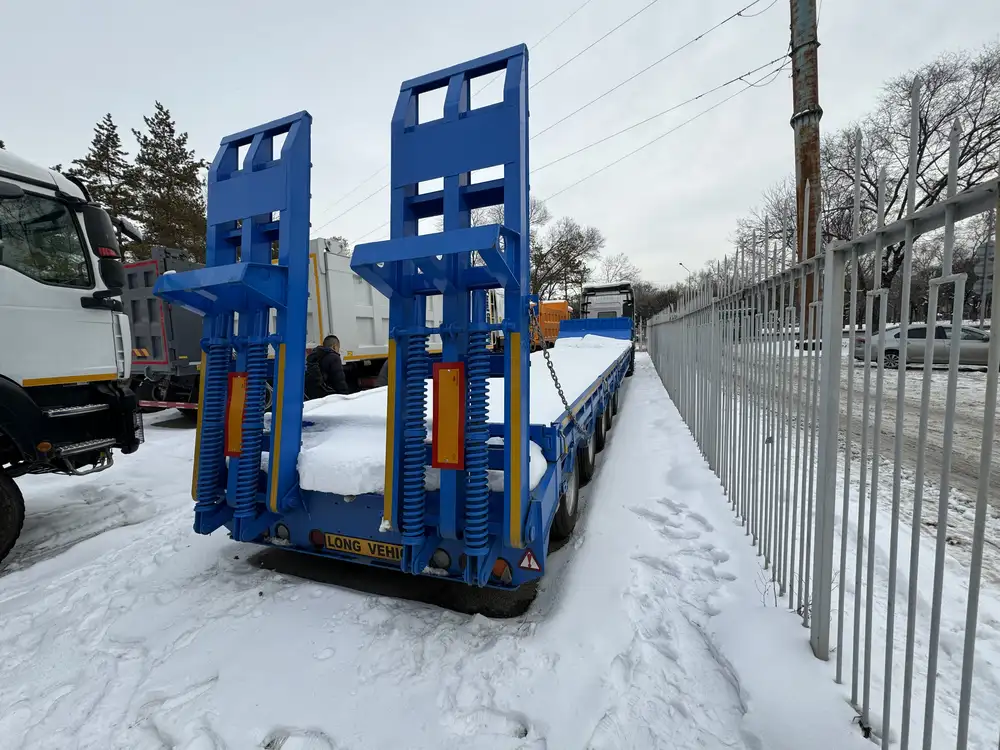In the realm of transportation and logistics, semi-trailers play a pivotal role in the movement of goods across vast distances. As manufacturers and operators, understanding the specific dimensions—both length and width—of semi-trailers is critical for compliance, safety, and efficiency. In this detailed exploration, we will dissect these measurements, the implications of their variations, and how they align with industry standards.
The Standard Dimensions of Semi-Trailers
1. Length: The Backbone of Trailer Configuration
Semi-trailers come in various lengths, generally influenced by industry regulations and the specific cargo requirements.
- Conventional Lengths: The most common lengths for semi-trailers can range from 48 to 53 feet. This variation often depends on freight requirements and local highway regulations.
| Trailer Type | Typical Length (Feet) | Usage |
|---|---|---|
| Standard Dry Van | 48 – 53 | General freight transport |
| Flatbed Trailer | 48 – 53 | Heavy machinery, construction |
| Refrigerated Trailer | 48 – 53 | Perishable goods |
47-foot Trailers: Less common but still used, especially where weight limits are a concern.
Specialized Trailers: Certain industries utilize custom lengths for specialized needs. For instance, lowboy trailers can vary greatly, often exceeding 35 feet to accommodate heavy equipment.

2. Width: Conforming to Regulations
The width of a semi-trailer is fundamentally anchored in federal and state regulations. The standard width is generally 8.5 feet (or 102 inches), although some specialized trailers might have different dimensions.
| Trailer Type | Typical Width (Inches) | Usage |
|---|---|---|
| Standard Trailers | 102 | General freight |
| Oversized Trailers | Varies, typically 108+ | Special loads (construction, etc.) |
| Lowboy Trailers | Can exceed 102 | Transportation of heavy equipment |
3. Height and Other Considerations
While length and width are primary considerations, height is also an essential dimension to factor in, particularly when assessing transport routes and loading docks. Most semi-trailers adhere to a height of approximately 13.5 to 14 feet, vital for clearance under bridges or other structures.
Weight Considerations: A Crucial Component
Beyond length and width, understanding the weight of a semi-trailer and its cargo is equally critical. The gross vehicle weight rating (GVWR) for standard semi-trailers typically caps around 80,000 pounds encompassing the truck, trailer, and cargo. Knowing this weight limit is essential for:
- Compliance with state and federal weight regulations.
- Preventing infrastructure damage on roadways.
- Maximizing load efficiency while ensuring safety.

Variations Across Different Regions
The dimensional regulations for semi-trailers can vary significantly from one jurisdiction to another.
In the U.S., federal standards apply primarily to interstate highways, while states can impose additional restrictions for roads under their jurisdiction.
In Europe, semi-trailer dimensions comply with directives set forth by the European Union, primarily limiting the total length to 16.5 meters (approximately 54 feet) in most cases, with rigid regulations on widths and weights.
Table: Summary of Key Regulatory Differences
| Region | Standard Length (Feet) | Standard Width (Inches) | Weight Limit (Pounds) |
|---|---|---|---|
| United States | 48 – 53 | 102 | 80,000 |
| Canada | 48 – 53 | 102 | 105,000 |
| Europe | 49 (approx.) | 98 (strict variation) | 88,200 |
Seasonal and Operational Factors Affecting Dimensions
Considerations about semi-trailer dimensions extend beyond regulatory compliance; operational factors also play a significant role.
Seasonal Loads: Certain industries experience peak seasons—like agriculture—that might prompt seasonal adjustments in trailer configuration to accommodate larger harvests.
Route Planning: The specific dimensions dictate route selection, particularly in navigating urban environments where tight turns can pose significant challenges.

Calculating Capacity: The Importance of Dimensions
Understanding the implications of length and width on trailer capacity can enhance operational efficiency. For instance, a 53-foot trailer generally has a cubic capacity of around 3,800 to 4,200 cubic feet, depending on height and design, making it an ideal choice for many freight transport needs.
Example Calculation of Load Capacity
Assuming a standard 53-foot dry van with a width of 102 inches and height of 13.5 feet:
- Volume = Length x Width x Height
- Volume = 53 ft (102 inches/12 inches/ft) (13.5 ft) = 3,800 cubic feet (approximately).
This volume must also be considered against the weight of the cargo to meet legal weight restrictions.
Choosing the Right Trailer for Your Needs

1. Determine the Type of Cargo
The first step is identifying the nature of the cargo. For example:
- Dry goods: Generally transported in dry vans.
- Heavy machinery: Requires flatbed or lowboy trailers.
- Perishable items: Best suited for refrigerated trailers.
2. Assess Route Requirements
Understanding the anticipated routes will guide choices on trailer dimensions. Transporting through urban areas might require trailers that are compliant with specific city regulations.
3. Optimize Trailer Usage with Regulations
Always account for local regulations, as non-compliance can incur hefty fines and lead to unnecessary delays.

Final Thoughts
Selecting the right semi-trailer, understanding its dimensions, and mastering the regulatory framework is crucial for effective logistics and transportation management. The length and width of semi-trailers are not merely numbers; they encapsulate a broader narrative of safety, efficiency, and compliance within the ever-evolving transportation landscape.
Whether you’re a fleet manager, a logistics coordinator, or a manufacturer, grasping the implications of semi-trailer dimensions enables better decision-making and enhances operational performance.
FAQs
What is the maximum legal length for a semi-trailer?
- In the U.S., the maximum legal length for a semi-trailer is typically 53 feet, though exceptions exist for specialized trailers.
Are all semi-trailers the same width?
- While 102 inches is the common width, some specialized trailers may vary, particularly in hauling wide loads.
What role does trailer height play in logistics?
- Trailer height impacts route clearance and loading/unloading at docks, making it essential to consider in planning logistics.
This comprehensive guide is intended to provide you with a thorough understanding of semi-trailer dimensions while catering to practical and operational needs. From dimensions and regulations to calculating capacity and selecting suitable trailers, every facet plays a significant role in transportation effectiveness. Understanding these dynamics not only contributes to compliance but also supports optimal performance in freight logistics.



